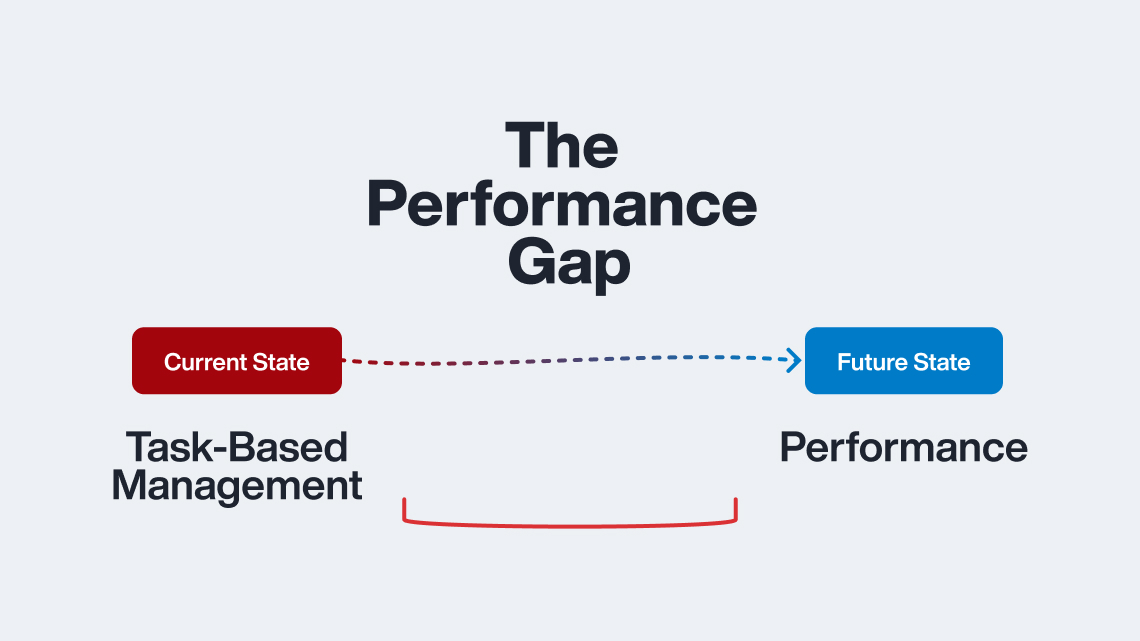Published on July 17th, 2024
By Megan Eales Monroe
Every June, there is one event that grabs the full attention of the multifamily property management world: NAA Apartmentalize. Here at AppFolio, this is one of our most eagerly anticipated events. Our team spends months preparing to bring our best innovations to the expo floor and our best content to the sessions we have the privilege to participate in.
This year in Philadelphia, our team had the opportunity to contribute to three different educational sessions throughout the conference. It was rewarding to collaborate with many accomplished and engaging speakers and bring together some of the best minds in multifamily for insightful discussions.
In case you weren’t able to attend, or if you’d just like to revisit some of the best insights, here’s a recap of the three educational sessions featuring our awesome AppFolio speakers.
Your AI Constitution: Drafting a Cohesive Top-Down Strategy
Speakers:
Stacy Holden: Industry Principal, AppFolio
James Scott: Director, CRE RE Lab MIT
Brian Bellew: VP of Operations, Atlas Real Estate
Matthew Baird: SVP of Engineering, AppFolio

In this session, AppFolio’s Stacy Holden and Matthew Baird joined Brian Bellew of Atlas Real Estate and MIT Professor James Scott to discuss how to govern the use of AI solutions within property management businesses.
Over the past year, generative AI has captured our imaginations, with news and examples of reasons to be excited and skeptical coming out nearly every day. One thing that’s clear is that successfully leveraging this technology within multifamily real estate requires a well-considered, top-down vision.
A recent study from The Conference Board found that just 26% of employees say their organization has a policy related to the use of GenAI. So, if your company is part of the 74% that don’t have an AI policy, you’re not alone.
Despite this lack of consistent policy, AI usage is already widespread. According to a recent report from Microsoft and LinkedIn, 75% of knowledge workers already use GenAI to accomplish work-related tasks. However, this usage is often covert — the study also revealed that 40% of employees have used GenAI for work without disclosing it.
Matthew and James provided some technical background to help attendees understand the current state of GenAI so they can craft a policy appropriate for their businesses.
In response to the question of GenAI’s current state in the industry, James pointed out that real estate is usually behind the curve with technological advancement because it’s an industry that doesn’t always reward first movers. In his opinion, GenAI is different because of the unprecedented speed of its development and adoption, in addition to its tangibility — everyone can use it and see how it works.
Matthew Baird illustrated the variety of solutions available today by introducing a spectrum of GenAI tools:

According to Matthew, there are four reasonable categories of solutions to consider. The first is Bolted-On, which employs AI to solve a specific use case. Chipotle uses this technology to field customer questions and complaints. The next is Process-Enhanced, and in this category, AI helps produce the product itself. For example, Nike uses AI in the design process for its footwear. With Deeply Integrated tools, AI and work are interwoven — you can use GenAI within a platform such as Adobe to complete tasks faster. The last category of tools is Pure AI, with ChatGPT as a perfect example. In this category, the product is solely AI. There’s a lot more out there, but in Matthew’s view, they fall into gimmicks on one end of the spectrum or academic research on the other.
From there, the discussion turned to considerations specific to the property management industry. Brian Bellew shared the journey his team at Atlas Real Estate has taken to introduce AI, painting a picture of a fundamental shift in their daily business.
To begin the journey, the Atlas executive team tasked each other with exploring various AI tools regularly to see the benefits and challenges of many different solutions. They also created a role they refer to internally as an “AI Czar” — this individual prepares monthly reports for leadership on changes in the field of GenAI and helps the business stay ahead of them. One of Brian’s guiding philosophies is that he wants to be quick to pilot but slow to implement — he believes in taking the time needed to vet new technology and introduce it to the team thoughtfully. In Brian’s view, this is why it’s safer to go with a large and reputable tech company for AI implementation as opposed to a small startup specializing in AI.
Brian shared four guiding principles of Atlas’ implementation of an AI policy:
Transparency: They let their team know it’s okay to use GenAI but ask in return that employees are always upfront about which projects they’re using it on.
Compliance: It’s critically important to ensure any use of GenAI is in compliance with regulations such as federal fair housing.
Privacy: They must keep any data or information collected by an AI tool private.
Creativity: The team at Atlas learned that although a product may have “AI” in its name, it may not really have GenAI; many they tried had only a small bit of AI layered in.
The session left attendees with several elements to consider for effective GenAI governance:

From Data to Decision: Are Your KPIs Actionable or Irrelevant?
Speakers:
Lia Nichole Smith: SVP of Education & Research, ApartmentRatings & SatisFacts
Stacy Holden: Industry Principal, AppFolio
Tammy Longo: Regional Sales Executive, ALN Apartment Data

In this session led by Lia Nichole Smith, SVP of Education & Research, ApartmentRatings & SatisFacts, attendees learned how to introduce three essential but unconventional KPIs (key performance indicators) to drive better analytics and business intelligence.
Lia began by sharing a list from futurist Bernard Marr of the 10 biggest mistakes companies make with KPIs. From not linking KPIs to overall strategy to not acting on your KPIs, there is a wide range of shortcomings in the way companies measure and use their performance data. Lia shared that across industries, companies are making on average 6 of these KPI mistakes.

To combat the paralysis that can occur when organizations do not measure actionable KPIs, each speaker introduced a specific KPI relevant to the multifamily resident experience and explained why it’s valuable and how to track it.
Stacy introduced a KPI called Speed to Lease, which looks at the conversion rate and time between leasing milestones to improve the resident experience and eliminate bottlenecks in the leasing process. While leasing teams commonly track their overall lead-to-lease conversion rates, this only provides part of the picture.

She shared the stories of Fairlawn Real Estate and Granite Student Living, who both identified opportunities to speed up the time between major milestones in the leasing process to improve the resident experience and increase their lead-to-lease conversion rates.
Next, Lia shared why leasing teams should go beyond lead attribution and look at the full resident journey with lead-to-lease-to-leave attribution. For each lead source, companies should look at the reason that those residents decided to lease and the reason they ultimately decided to leave.
To understand the impact this can make, she walked the audience through example data from a property management team’s leasing system. The sample data showed that leads from Google who leased because of a move-in special had the shortest overall tenure and typically left the property because they found a better deal elsewhere.
Lia then recommended that companies use this same data to reverse engineer the resident journey and analyze lead and lease attribution through the lens of the renters’ ultimate reason for leaving the property. This leads to unique insights — in the example data set she showed, among residents who ultimately left due to a rent increase, residents who originally chose to lease due to a move-in special had the shortest average tenure.

Tammy Longo of ALN Apartment Data shared a third metric: Customer Lifetime Value (CLV), which encourages leasing teams to understand each new resident’s impact on business revenue. In the leasing world, it’s common to talk about turnover rate and retention rate in percentages — but not usually in terms of dollars.
According to Tammy, CLV as a KPI gives you a number beyond transactions — it gives you the value of a customer across their entire relationship. When on-site teams know the dollar value of each potential client, it can change the way they interact with them and help them think about longevity beyond percentages.
In many cases, analyzing CLV reveals that increasing your overall average stay can have a bigger impact on profits than increasing rent prices. Monitoring this total value can tell you if your customers are having positive or negative experiences throughout their journey and help you determine if your customer experience management strategies are working.

HOTMA Ready Without the Hassle: Practical Steps to Prepare
Speakers:
Colleen Winship: Compliance Program Manager, AppFolio
Karen Graham: President & CEO, Karen Graham Consulting
Devon O’Hare: Regional Manager, Artisan Management Group

The deadline for affordable housing teams to fully implement HOTMA, or the Housing Opportunity Through Modernization Act, is approaching fast: Teams must comply by January 1, 2025. Operationalizing the changes required by this legislation is no easy task, so in this panel our speakers focused on how to best set up affordable housing property managers for success as they navigate through the upcoming HOTMA changes.
They began with a bit of context on the history of HOTMA, going back even before it was signed into law in 2016. Although the COVID-19 pandemic paused HOTMA implementation, HUD published additional rules and implementation guidelines in 2023.

Karen Graham, President and CEO of Karen Graham Consulting, walked participants through 6 steps that can help lead to success while implementing HOTMA. These include:
- Getting familiar with the industry standards for HOTMA implementation
- Making required policy, procedure, and form updates
- Leveraging the state Finance Housing Agency or HUD
- Using the grace period to your advantage
- Training your staff
- Communicating with residents
Then, Colleen and Devon shared a case study of how Devon’s team at Artisan Management Group has navigated their own HOTMA implementation journey, along with some important do’s and don’ts that other teams can take away from their experience.
Do:
- Evaluate who should attend HOTMA training within your organization
- Build out program-specific training material
- Try to get proper training materials for the right staff. If most of the training is for Section 8, having your LIHTC staff in them would not be a great use of their time. Know the programs so that your staff is taking the right courses
- Create checklists with updated requirements
Don’t:
- Overwhelm staff with too much training
- Have LIHTC properties sit through the HUD portion of HOTMA training
- Implement unnecessary rules before deadlines
Colleen also shared links to several helpful resources for teams implementing HOTMA:
Thank You for Another Successful Apartmentalize
On behalf of the team at AppFolio, we’d like to thank the organizers of NAA Apartmentalize for putting together an incredibly strong program, our dedicated speakers for all their work to prepare engaging sessions, and our customers for partnering with us to bring powerful case studies and insights for attendees to learn from. We’ll see you in Las Vegas next year for Apartmentalize 2025!








Comments by Megan Eales Monroe
Consistency Is Key: 5 Ways to Help Property Management Teams Work More Effectively and Efficiently
Hi there Ryan! We definitely have solutions that make sense ...
How Will Rent Control Impact Property Management Companies in 2020?
Hi Frank - the Consumer Price Index (CPI) is used as a ...
What is AI, and How is it Transforming the Real Estate Industry?
Hi there, Kim! The price depends on your business' ...
There’s a Better Way to Get Work Done: How to Maximize Team Performance through Experience
Hi Amanda, We'd be happy to provide you with more info! ...